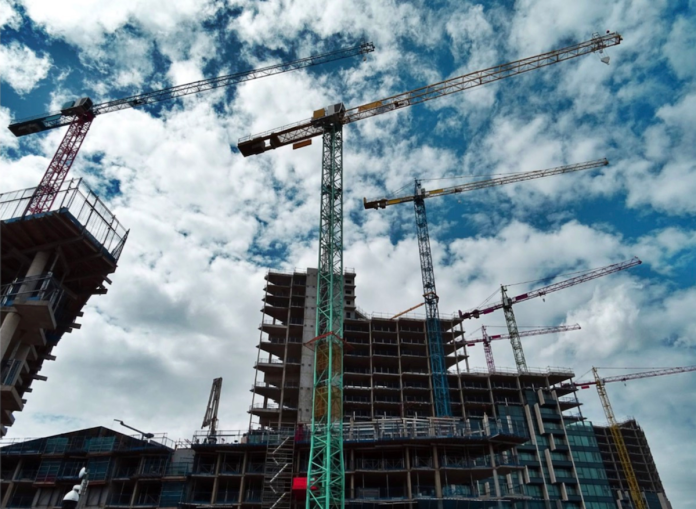Insurance spotlight: Combating contractor insolvency and protecting rental income

Photo by Juhasz Imre on Pexels.com
In the ever-evolving landscape of the UK residential market, factors like interest rates, construction costs, and governmental incentives (or a lack of) have led investors and developers to explore alternative asset classes. While the Build-to-Rent (BTR) sector has garnered attention, the purpose-built student accommodation (PBSA) market also stands out as a resilient performer. With student numbers reaching record highs and a persistent demand for beds, the sector anticipates robust rental growth in the short and mid-term.
Despite the potential, challenges involving planning, viability, and construction costs persist. However, experienced developers, supported by various capital partners, are finding opportunities and breaking ground on PBSA projects.
At J3, the significance of PBSA and its latent defects insurance has evolved from being a “nice to have” to an essential component, as demonstrated by recent industry shifts. Forecasts from September ‘22 have materialised, highlighting the increasing risk of insolvencies among contracting firms. Between January 2023 and August, 4,263 construction firms in the UK ceased operations, marking an 8.3% rise from the previous year and a 34.5% surge from the pre-pandemic period in January 2020. This trend indicates an ongoing challenge for the industry.
The impact of these insolvencies is most acutely felt by smaller, specialised subcontractors, with 59% of affected firms falling into this category. However, even main contractors, comprising 36% of insolvencies, have grappled with demand and supply issues.
In the context of PBSA, developers have traditionally relied on collateral warranties in the event of post-completion claims. However, with contractors no longer available to address issues, this approach poses a risk to the income outlook for asset owners and operators.
In response, we’ve witnessed a triple-digit surge in both enquiries and policies incepted over the past 18 months. Developers are now seeking to safeguard their income streams and enhance the marketability of their assets for potential investors or pension funds. Notably, a key feature appreciated by our clients is the loss of rent coverage, providing income protection for up to three years from practical completion.
For PBSA developers, the key takeaway is clear: investing in latent defects insurance is increasingly becoming standard practice to safeguard and enable future developments.
What makes this policy even more appealing to owners and investors is the inclusion of loss of rent in the event of a latent defect. It’s a compelling narrative to convey that rental income is safeguarded as part of this policy, providing investors with great comfort in knowing that their future revenue is secure. It’s important to emphasise that access to loss of rent coverage is exclusively available through the latent defects policy.
Let’s consider an example: Suppose you have a 500-unit scheme with a GDV of £150,000,000 and a rental yield of 5.5%. This translates to a yearly income of £8.25 million.
As an addition to the latent defects policy, it is possible to incorporate loss of rent coverage for up to 3 years, though most developers opt for just the first two years. Data indicates that the risk of a claim is highest during the first two years. Thus, the ability to protect £16.5 million of future income during this perceived “higher-risk” period is highly appealing to beneficiaries.
Surprisingly, the cost for such coverage is quite attractive, considering the level of protection it offers. To get an instant indication for your next PBSA Development with loss of rent income included, use the J3 Advisory Warranty calculator.
In addition to Latent defects insurance, other key insurance considerations for PBSA developers include:
- Contractor’s All Risk (CAR) Insurance: Provides coverage for damage or loss to the project during construction, including theft, fire, flood, storm, flood, escape of water, terrorism and many more.
- Delay in start-up cover: it is advisable to secure Delay in Start Up (DSU) or Advanced Loss of Profits (ALOP) insurance in conjunction with the owner’s or developer’s Contractors All Risks (CAR) policy. This coverage is tailored to address various financial losses the owner may face due to delays resulting from damage to the insured building covered by the CAR policy. DSU coverage encompasses potential losses such as additional debt finance costs or the loss of anticipated revenue.
- Public Liability Insurance: Covers the developer against third-party claims for injury or property damage that may occur during construction activities.
- Environmental Liability Insurance: Covers the cost of cleanup and restoration in the event of environmental contamination during construction
- Employers’ Liability Insurance: Mandatory in the UK and it covers the developer’s liability for injuries or illnesses suffered by employees while on the job.
- Professional Indemnity Insurance (PII): Protects against claims of professional negligence or errors made by architects, engineers, and other professionals involved in the project in relation to the design and specification.
- Builders Plant, Tools, Equipment Insurance: Offers coverage for damage or loss to plant, tools, equipment, site huts and any other equipment.
- Performance Bonds and Guarantees: Ensures that the developer fulfils contractual obligations, providing financial security to project owners.
- Building and Loss of Rent insurance: Provides coverage for the development once completed including theft, fire, flood, storm, flood, escape of water, terrorism and many more.
PBSA developers should seek guidance from experienced insurance advisors to customise coverage according to the unique requirements of their project. If you’re interested in a complimentary, no-obligation review of your insurance program, get in touch with J3 Advisory on 020 3096 0718







